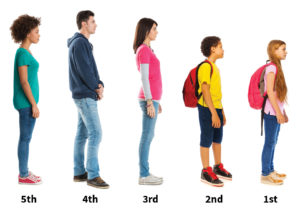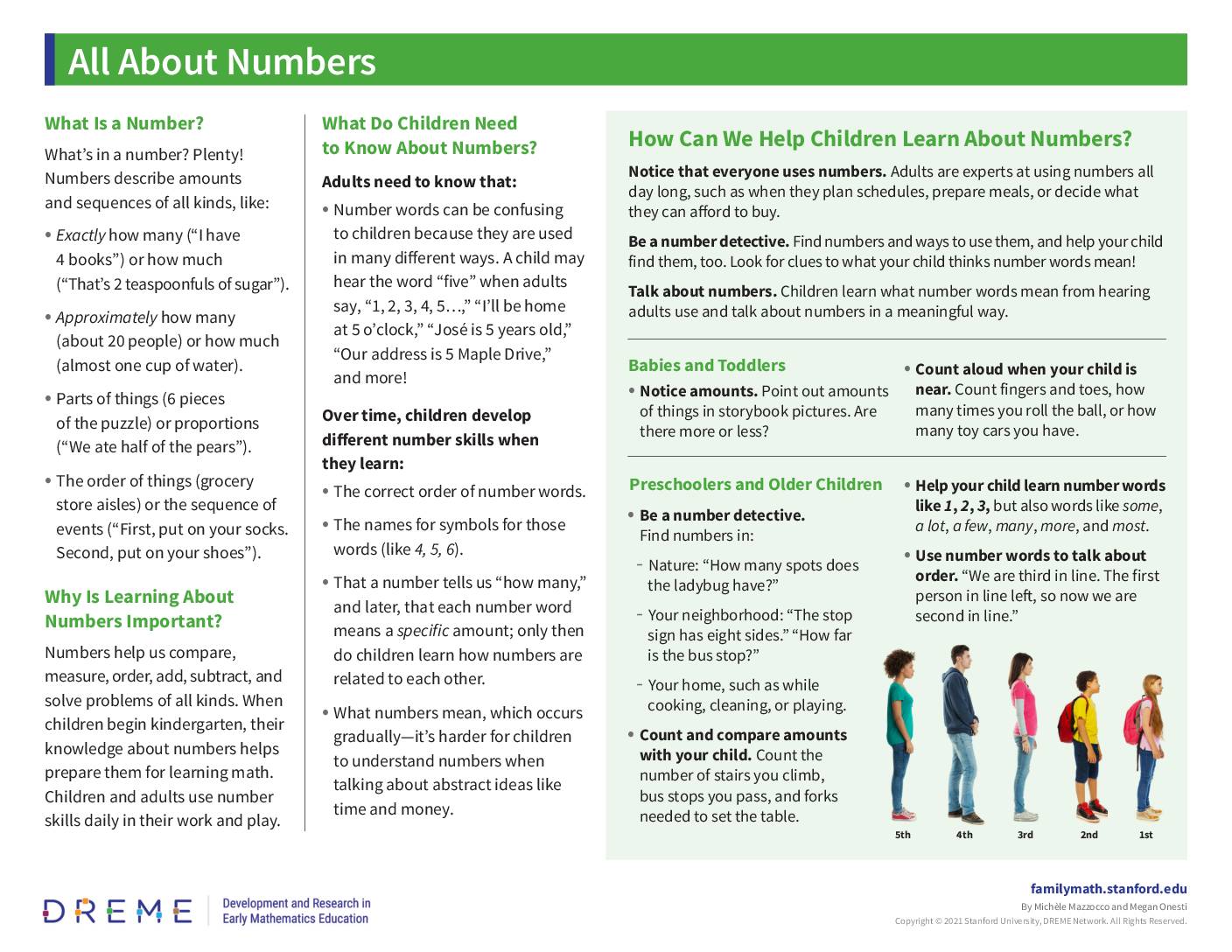 What Is a Number?
What Is a Number?
What’s in a number? Plenty! Numbers describe amounts and sequences of all kinds, like:
- Exactly how many (“I have 4 books”) or how much (“That’s 2 teaspoonfuls of sugar”).
- Approximately how many (about 20 people) or how much (almost one cup of water).
- Parts of things (6 pieces of the puzzle) or proportions (“We ate half of the pears”).
- The order of things (grocery store aisles) or the sequence of events (“First, put on your socks. Second, put on your shoes”).
Why Is Learning About Numbers Important?
Numbers help us compare, measure, order, add, subtract, and solve problems of all kinds. When children begin kindergarten, their knowledge about numbers helps prepare them for learning math. Children and adults use number skills daily in their work and play.
What Do Children Need to Know About Numbers?
Adults need to know that:
- Number words can be confusing to children because they are used in many different ways. A child may hear the word “five” when adults say, “1, 2, 3, 4, 5…,” “I’ll be home at 5 o’clock,” “José is 5 years old,” “Our address is 5 Maple Drive,” and more!
Over time, children develop different number skills when they learn:
- The correct order of number words.
- The names for symbols for those words (like 4, 5, 6).
- That a number tells us “how many,” and later, that each number word means a specific amount; only then do children learn how numbers are related to each other.
- What numbers mean, which occurs gradually—it’s harder for children to understand numbers when talking about abstract ideas like time and money.
